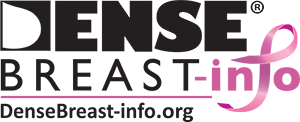State Insurance Law, RANZCR Statement, New Study
State Insurance Law
A new Massachusetts insurance law requiring no-cost coverage for screening and diagnostic imaging (exemptions apply) will go into effect on 1/1/2026. For more details, see DBI’s State Law Insurance Map and Table.
RANZCR Position Statement
The Royal Australian and New Zealand College of Radiologists have issued an updated Breast Density Position Statement – Why Reporting Matters. According to the statement, “RANZCR supports the inclusion of breast density reporting in all mammographic assessments. This move aligns with the growing global recognition of the importance of breast density in breast cancer screening. In countries like the USA, it is already mandatory to report breast density in mammograms, and similar practices are being considered in Europe.”
New Study
A study by Gjesvik and colleagues examined whether a commercially available AI algorithm for breast cancer detection could also estimate risk for future breast cancer development. This retrospective cohort study included 116,495 women aged 50-69 years who underwent at least 3 consecutive biennial mammography screening rounds in Norway. The study found that the AI algorithm for cancer detection was able to estimate future breast cancer risk 4-6 years before diagnosis. Specifically, compared to women who did not develop breast cancer,1 the study found:
- The mean absolute difference in AI scores between breasts of women who developed screen-detected cancer or interval cancer was greater at each round and increased over the three rounds.2,3
These results suggest that AI scores for cancer detection may be used to identify women at high risk of developing cancer who may benefit from supplemental screening.
1A cancer detection score of 0-100 was given to each breast. The mean (SD) absolute differences in AI scores between breasts of women who did not develop breast cancer were 9.9 (17.5), 9.6 (17.4), and 9.3 (17.3) at the first, second, and third screening rounds, respectively.
2Scores were higher in breasts that developed cancer, and this was compared to the noncancerous breast. The mean (SD) absolute differences in AI scores between breasts of women who developed screen-detected cancer in one breast and not the other were 21.3 (28.1), 30.7 (32.5), and 79 (28.9) at the first, second, and third screening rounds, respectively.
3The mean (SD) absolute differences in AI scores between breasts of women who developed interval cancer in one breast and not the other were 19.7 (27.0), 21.0 (27.7), and 34.0 (33.6) at the first, second, and third screening rounds, respectively.

